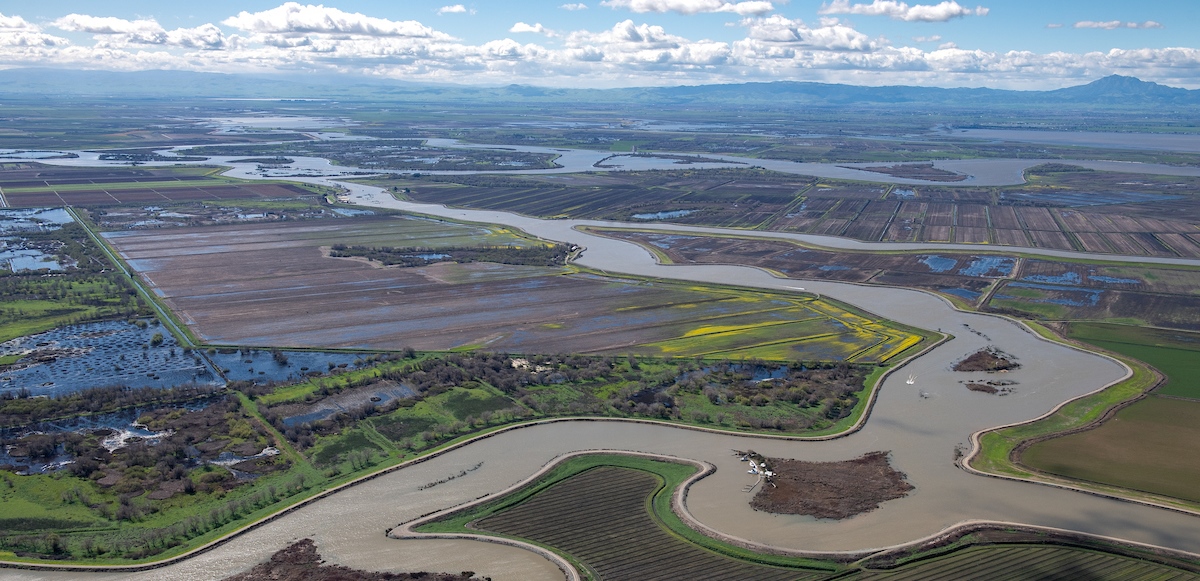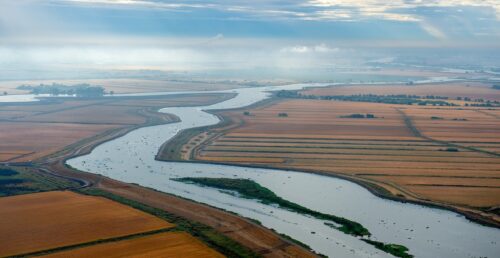At a December 2018 meeting of the State Water Resources Control Board, the Board was considering one of the highest-profile, complex water management issues: the adoption of Phase One for the Lower San Joaquin River for the update to the Bay-Delta Water Quality Control Plan.
“The Board was presented the potential for something different,” said Chelsea Haines, ACWA’s Regulatory Relations Manager, who opened the panel discussion at the ACWA Spring Conference in May 2022. “I think that potential is the culmination of the ideas and opportunities that people on this stage today brought forward. The State Water Board moved forward with adopting unimpaired flows for the lower San Joaquin, but in doing so, created an interesting opportunity in their resolution for the idea of a voluntary agreement.”
In March of 2022, three and a half years later, the Newsom administration and the public water agencies involved in the negotiations announced a Memorandum of Understanding (MOU) on measures to provide additional water flows and new habitat to help improve conditions in the Delta watershed.
At the spring ACWA conference, a panel discussed the voluntary agreements. (Note: this is a panel of water interests who support the voluntary agreements. For other viewpoints, please see the list of links at the end of this post.)
Seated on the panel:
- Thad Bettner, General Manager of Glenn Colusa Irrigation District and Chair of ACWA’s Voluntary Agreement Working Group
- Chuck Bonham, Director of California Department of Fish and Wildlife
- Jennifer Pierre, General Manager of the State Water Contractors
- Randy Record, Vice President of Eastern Municipal Water District, Director on the Metropolitan Water District board and member of the California Farm Water Coalition
Overview of the voluntary agreement MOU
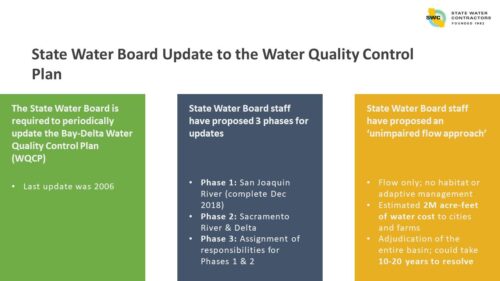 Jennifer Pierre began by noting the purpose of the voluntary agreement is to satisfy the requirement for a water quality control plan for the Bay-Delta, last updated in 2006.
Jennifer Pierre began by noting the purpose of the voluntary agreement is to satisfy the requirement for a water quality control plan for the Bay-Delta, last updated in 2006.
The State Water Board staff has proposed to implement the update in three phases:
- Phase one is the San Joaquin River and South Delta Salinity Objectives
- Phase two is the Sacramento River and Delta
- Phase three is the Board assigning who’s responsible for meeting the different updated objectives.
The State Water Board also proposes an unimpaired flow approach, which would result in 2 MAF less water for cities and farms across the watershed.
“Perhaps even more importantly, it would likely lead to litigation that we think could take between 10 and 20 years to resolve, which undercuts any sort of regulatory certainty in the Delta and limits our ability to be responsive to climate change or create any new infrastructure operations,” said Ms. Pierre. “Overall, just more uncertainty, which I think we need less of.”
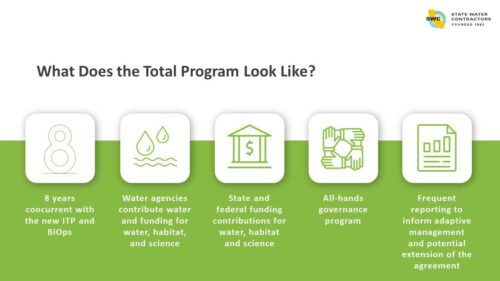 The voluntary agreement proposes an eight-year program with an option to renew. It will hopefully be consistent with the state permit and the biological opinions currently under reconsultation. The water agencies are contributing water and money for water purchases, habitat construction, and implementing science and adaptive management. The state and federal funding would be used to purchase some water but primarily focus on habitat construction, monitoring, adaptive management, and science. The governance program is under development.
The voluntary agreement proposes an eight-year program with an option to renew. It will hopefully be consistent with the state permit and the biological opinions currently under reconsultation. The water agencies are contributing water and money for water purchases, habitat construction, and implementing science and adaptive management. The state and federal funding would be used to purchase some water but primarily focus on habitat construction, monitoring, adaptive management, and science. The governance program is under development.
“It really is all hands and everybody is invited, despite perhaps what you may have read,” Ms. Pierre said. “The door is open for folks to participate now in developing the governance structure. But also, in implementation, we believe strongly that it’s important that all parties are at the table. And we’re hoping that in setting the table in this way, all the different trade-offs that water users and managers are used to making can be inclusive of all of the different perspectives in a way that we all learn together and improve our decision-making. So in my opinion, the primary benefit of the voluntary agreement is setting ourselves up for success, being responsive to the changing environment, and using the resources that the voluntary agreement provides to do that.”
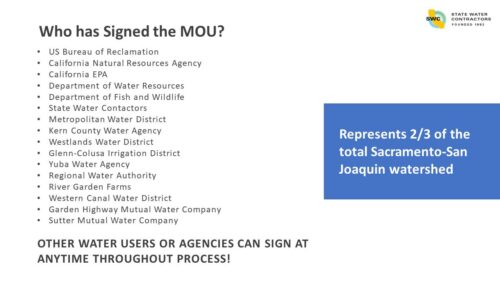 The slide lists those who have signed the MOU. It represents about two-thirds of the watershed, and Ms. Pierre said she was expecting more parties to sign on.
The slide lists those who have signed the MOU. It represents about two-thirds of the watershed, and Ms. Pierre said she was expecting more parties to sign on.
Ms. Pierre acknowledged that no party from the San Joaquin River has signed, but they are actively working to bring them in. “Because the success of this program really hinges on all of us working together. This is a watershed program. And that’s what makes it unique.”
What is also unique about the voluntary agreement is that it can be implemented immediately. “Phase three of the state board’s process would be a process of assigning responsibility, which we would expect pretty much to create a web of litigation,” she said. “With the voluntary agreements, because the resources and the participation are voluntary by nature, we can start implementation as soon as the State Board takes action.”
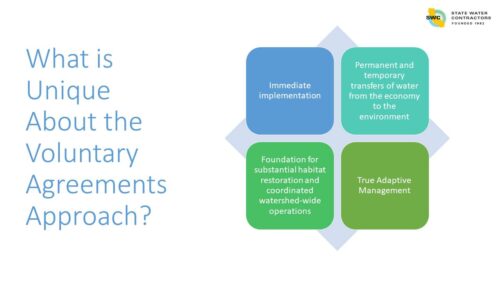 She also noted that parties are discussing early implementation actions such as habitat restoration, flow actions, funding, and governance. They are also studying and discussing adaptive management.
She also noted that parties are discussing early implementation actions such as habitat restoration, flow actions, funding, and governance. They are also studying and discussing adaptive management.
“This is a transfer of water,” she said. “Unlike EWA or other previous programs, we’re talking about transfers – in some cases permanent, but in most cases, an eight-year transfer of water from where it’s currently used to drive economies throughout the state to the environment.”
“We are talking about a huge amount of water up to 825,000 acre-feet in some years but on a willing seller basis,” she continued. “This is voluntary. This is not the state and federal government or the voluntary agreement program coming to water users and saying you have to sell this water; you have to give it up. It’s really about creating space for people to come into the program.”
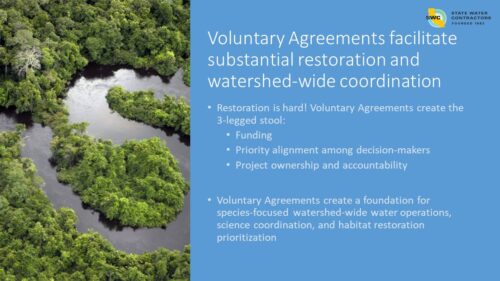 It’s novel for the state to be talking about permanent transfers and the state purchasing water, but watershed-wide, that’s critical.
It’s novel for the state to be talking about permanent transfers and the state purchasing water, but watershed-wide, that’s critical.
“Some people have said that we’re going to do the restoration anyway, and I would argue that’s not true,” said Ms. Pierre. “Restoration requires funding, and the state is providing a lot of the funding. But it also requires that we have alignment in the priorities in what we’re doing and that we’re doing that across all the permitting agencies, the project owners, the landowners, and all of us. The voluntary agreement provides a forum for that alignment, along with accountability and ownership of the project. And from my perspective, those are the three things you really need to get the restoration done.”
Ms. Pierre said that they are serious about adaptive management. “We are studying what works and what doesn’t work and what needs to be institutionalized within our decision process in order to truly learn,” she said. “We need to make sure we do it right, ask the right questions, study the right outcomes and make adjustments accordingly. We’ve engaged with a consultant with extensive experience on Platte River recovery, Missouri River recovery, and Canadian boreal forest agreement. These are all multistakeholder programs, including tribes, water users, federal, and state governments. And they’re helping us to formulate the governance structure.”
Perspective of Chuck Bonham, Director of the Department of Fish and Wildlife
Next, Department of Fish and Wildlife Director Chuck Bonham gave his thoughts on the voluntary agreements and the role his agency has played in bringing the agreements to this point.
“I want to give you a couple of thoughts from my own heart based on this experience and then tell you three things that I think this approach will make a difference for,” began Mr. Bonham.
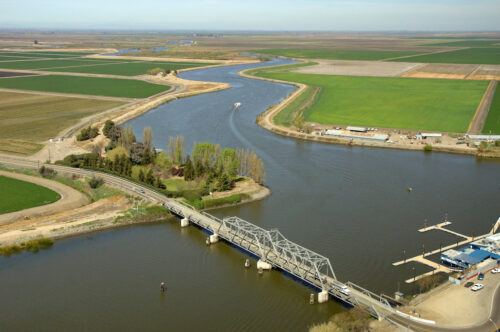 In preparing for this presentation, Director Bonham was reviewing notes from past presentations, and he ran into a book review of a book authored by Vice President Al Gore that was in the New York Times Book Review back in 2015. “What he had to say at that time was, ‘extinction is a relatively new idea in the scientific community. Well into the 18th century, people found it impossible to accept the idea. Scientists simply could not envision a planetary force powerful enough to wipe out forms of life that were common in prior ages.”
In preparing for this presentation, Director Bonham was reviewing notes from past presentations, and he ran into a book review of a book authored by Vice President Al Gore that was in the New York Times Book Review back in 2015. “What he had to say at that time was, ‘extinction is a relatively new idea in the scientific community. Well into the 18th century, people found it impossible to accept the idea. Scientists simply could not envision a planetary force powerful enough to wipe out forms of life that were common in prior ages.”
Mr. Bonham also dug into Elizabeth Kolbert, a writer at the New York Times. “She wrote in May of 2009 that President Thomas Jefferson once said, ‘Such is the economy of nature, that no instance can be produced of her having permitted any one of her animals to become extinct,’” he said. “And according to her research, she argued that Jefferson actually sent Meriwether Lewis and William Clark west hoping to find live mastodons.”
“Why do I bring this up? We have a certain set of fish in California that are facing that kind of future if we don’t do something about it. I don’t have time to think about who’s to blame for it. I’m only thinking about what we can do to change that trajectory in the future. So that’s how I get to voluntary agreements.”
The reality is that California is not the same state it once was, said Mr. Bonham. The state was once an amazing spatial and temporal complex of variable habitats with large predators, grizzly bears on the beach feasting on whale carcasses, and major rivers crashing into a reverse delta. The floodplains, food productivity, riparian cover, nature-based tree cover that cools the waters, gravel beds for spawning – it’s mostly gone.
“The second thing that strikes me in this voluntary agreement is we let ourselves get stuck in choices: either-or,” he said. “I don’t have the luxury anymore to fight about whether this is all about more water in our rivers or it’s all about more habitat restoration. The reality is, it’s both. You can almost always produce a greater synergistic benefit if you combine actions. So flow is critical for species that depend on it, including humans. And unimpaired flow is a fine way to figure out how you might do a budget. But if you’re only thinking about flow as a way to fight off extinction, you may improve the ability for species abundance, but you’re not doing much for species resilience.”
“Conversely, if you’re just thinking about habitat, you might not do much for the ecological benefit of abundance, whereas you would do a lot for resilience,” he continued. “If you combine the two, you’ve got an integrated strategy that can produce species abundance and resiliency. That’s what these agreements do. They integrate habitat restoration at a scale we’ve not pulled off and with improved instream flow in a way that works for the user community as well.”
“Here’s the last thing I’d say. We’re doomed if we don’t do anything. Is this perfect? No way. Is there confrontation and controversy about it? Absolutely. Are there some in this room that may want to kill it? Probably. You have to start somewhere. If you never start, we’re going to stay stuck exactly where we are.”
In the book, Ecosystems for California, authors Harold Mooney and Erica Zavaleta found that more than 30% of species in California are threatened with extinction; however, less than point 3% of our native species have been driven to extinction in the last 200 years.
“This is remarkable considering the sheer scale and magnitude of so much change in the state,” said Mr. Bonham. “They say, to paraphrase Aldo Leopold, we have managed to save almost all the pieces. And remarkably, we now have a second chance to move into the future with thriving populations of a fully near complement of our flora and fauna. But only if we do something. If we don’t do anything, we will lose in so many ways.”
Mr. Bonham closed by recalling an article in the Washington Post where tribal biologist Mike McHenry, speaking after the removal of the Elwha Dam, said, ‘When I got into wildlife biology, I never thought I’d be working with excavators. But I came to realize if you want nature back, you have to go big.’
“That’s the promise of this agreement: doing something together at a scale not done before, in a way that works for all the major parties. And we actually have a chance to do something instead of sitting on our butts and talking about what to do for another decade.”
Water agency perspectives
QUESTION: Moderator Chelsea Haines turned to Randy Record and Thad Bettner and said, “You’ve carried a vision of this through the statewide watershed-wide perspective, but also within your own water agency. Can you provide a perspective as to why this was an important solution for you? How are you looking at the responsibilities you’ll have and the solutions you are bringing to the table that are part of this MOU?”
Randy Record, Director at Eastern Municipal Water District and Metropolitan Water District, began by saying that part of his job is representing the public and looking at the big picture. “The only thing I can say for sure is that the status quo is not working. It’s just not working at all. So my perspective, being on a lot of water boards and as a farmer, is that it has to change.”
Mr. Record recalled how there was a panel discussion the previous week at Metropolitan that included Jared Blumenfeld from Cal EPA, Metropolitan Staff, NorCal water officials, and an NGO. It was a good discussion, he said.
“Most of the discussions talked equally about flows and habitat, except for one presentation, and the only talk about habitat in that was that it’s not a replacement for water, and I couldn’t agree more,” said Mr. Record. “As Chuck said, you have to have both. And the idea that flow for the sake of flow in the way the system is set up, because of centuries of modification to just get it through fast, isn’t working.”
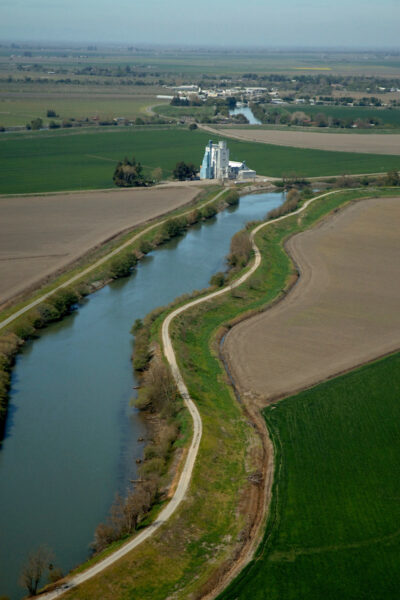 “I liked what Jennifer said about accountability and ownership because I think when people come forward and say, ‘Okay, I think I can live with this,’ it’s a whole new deal,” he continued. “The idea that a regulator will say, this is the plan – I’m not being critical, it’s a hard job, they do the best they can – then it gets litigated. We can’t let that continue to happen.”
“I liked what Jennifer said about accountability and ownership because I think when people come forward and say, ‘Okay, I think I can live with this,’ it’s a whole new deal,” he continued. “The idea that a regulator will say, this is the plan – I’m not being critical, it’s a hard job, they do the best they can – then it gets litigated. We can’t let that continue to happen.”
Mr. Record cautioned to be conscious of the environmental groups that are opposed, as the environmental community is not what it was years ago. “We have those organizations that survive on litigation, and those that are part of projects and partnerships that really get things done. So we just need to be conscious of that.”
He concluded by noting that on the Colorado River, seven states, the country of Mexico, and several Tribes have come together and developed a habitat conservation plan. “It’s working well, and I hope that by taking this new approach, we’ll see the same success and result within the state of California.”
Thad Bettner, General Manager of the Glenn-Colusa Irrigation District, began by saying the name ‘voluntary agreements’ is terrible. “As we do more outreach to our communities, the state, and stakeholders, we need to better define this program. And the name ‘voluntary agreement’ doesn’t really serve what the program is. So, you know, that’ll be part of our work going forward, certainly.”
“We’re on a path that’s going forward, and we have to keep moving,” Mr. Bettner said. “We have been tinkering with this concept since the end of 2018 just trying to get it right. And I think there was just the sense that we can keep tinkering, and we’re never going to get there. But, at some point, we have to move.”
He noted that in the Sacramento Valley, they are doing a lot already. Flooded rice fields provide surrogate habitat, and they are actively working on restoration projects.
“We are trying to service the environment where we’re at, but we’re just one piece,” he said. “Not looking at a larger picture won’t get us where we need to go either. So we felt it necessary to be able to participate in a framework that was just larger than just our immediate vicinity or issue.”
It’s a great path forward, but there’s a lot of work to be done. Mr. Bettner indicated they have been talking with NGOs about joining the effort. “Part of that is they offer a lot of expertise that would be vitally important to have on a lot of our governance discussions, and a lot of the restoration projects that we’re doing involve decisions about how to use water. For the first time, we’re talking about a block of water for the environment, so how should it be used? So having their input is really vital.”
This year, the Sacramento River and Shasta Dam are in one of the direst situations ever, so Mr. Bettner said they have been having conversations about operations and impacts on communities and the fisheries.
“It was uncomfortable. But we said, if we don’t sit down in a room and figure this out and talk about the trade-offs and the challenges, it won’t get done timely, and it likely will go through a regulatory process that we won’t like,” said Mr. Bettner. “So we pulled in Chuck’s team, federal fish agencies, Reclamation, State Board, other water users – all the same people that would be around a governance table in the voluntary agreements. And I think we got to a deal in less than three weeks on an operational plan for this year, which likely would have taken more than two months.”
“So in my mind, that’s the type of governance and decision making to me with this new framework, and adding other tools in that toolbox, like flow, habitat, funding, science, accountability, transparency – it gives me a lot of hope that this is the right path forward.”
A matter of trust
QUESTION: “It seems that with these really big, groundbreaking, innovative efforts, a fundamental piece to that is trust. Can you describe the process of how we’ve come to where we’re at now? How have you been working through the process to build trust?
“Historically, the exporters have been responsible for the Delta conditions, and tributary water users have been responsible for their tributaries,” said Ms. Pierre. “So we all know our spaces really well, but we don’t know each other’s spaces that well. Part of building trust is learning about how those systems operate, what constraints there are, what opportunities there are, and how there can be synergies across them. And we have a lot more work to do.”
She recalled how the State Board staff at one point had done some modeling, which led to some healthy conversations around why operators had to do things a certain way that the Board likely wasn’t aware of before or an idea that the board staff maybe thought could happen that the operators had never really contemplated before.
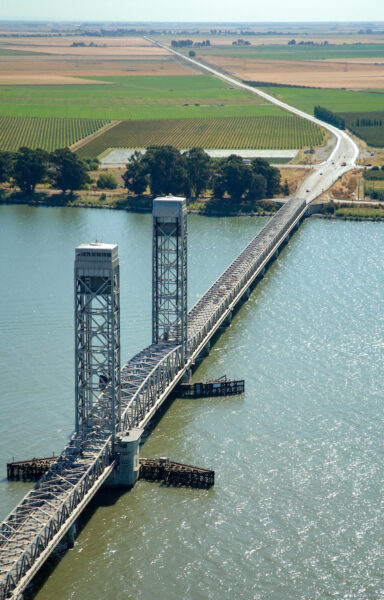 On the Colorado River, Ms. Pierre has always admired each party’s ability to understand not only their own needs, but the needs of the other parties and ways that solutions can come forward.
On the Colorado River, Ms. Pierre has always admired each party’s ability to understand not only their own needs, but the needs of the other parties and ways that solutions can come forward.
“That’s really what I’m hoping the governance program builds so that I can know inside and out exactly what Chuck and Thad need so that when we need to make a decision, I can be part of the thinking body of what options might be available to us. And I think bringing in all the different perspectives just expands the types of opportunities that we can create for ourselves.”
The governance structure will be tasked with putting together a strategic plan. There will be annual reports as well as three-year and six-year reports that will be submitted to the State Board for their review. The goal is to do the maximum amount of habitat restoration within the eight-year period. The structure will also act as a ‘clearing house’ to coordinate operations, such as reservoir releases, to achieve maximum benefit for the environment.
“It may not always be available to us, but the fact is, we don’t even have a forum for those sorts of communications right now,” said Ms. Pierre. “So setting up that communication, where you can really put these resources to their best use together, is going to be really helpful.”
“We don’t even agree on facts in the Delta,” she continued. “But I think we can maybe agree on questions. So what the voluntary agreement process is going to do is agree on questions and set up a science and monitoring program. Then hopefully, over time, the information we learn from the science and monitoring is something we’re all agreeing with. So I think having a common set of facts is going to be really helpful because the system is only going to get more complex.”
Ms. Pierre acknowledged that it had been a lot of work to get to this point, and there’s much more work ahead for the next eight years. “But I’d rather do this than the kind of work we do in court, fighting each other, wasting time and money. So I’m just hoping we’re shifting from that to this kind of work because it is all hands on deck to get this done.”
Chuck Bonham remarked that trust is hard to earn and easy to lose. “In my experience, when you can do something together, that creates trust. I have found that those that live, own, and work on the land and with our waters, want to do stuff, too. The farming community is a ‘get it done community,” right? You fix things. And the same is true if you’re an engineer. And that’s why I think doing habitat restoration at the pace and scale we want can lead to a different kind of trust dynamic, which is solid and robust.”
“Often, folks take an agency like ours and put it in a box, even though they don’t really know us,” Mr. Bonham continued. “Our Department has gone through an evolution where we aren’t interested in arguing about flow only. And we’re willing to say that we’re fine with less water if we can figure out a way to integrate it with habitat. And we want to do both with you in partnership. And I’d ask you not to leave the room and forget that. Because you may hear different things from your colleagues about our Department’s intent in the agreement space.”
“My last thought on trust is ‘Tempus fugit,’” said Mr. Bonham. “We are in an existential crisis on our front with a few of these species. … So, for me, this sense of urgency is a third way to build trust. If we can get into this space together right now, do these habitat projects, and navigate this space, the trust will be bankable for a long time in the future for California. And I think that’s a good thing.”
Randy Record said that Metropolitan is not in the watershed where they are the biggest exporter, so trust comes differently. “I think we’ve proven that we can be trusted on several fronts, and one is just conservation. Over the last 20 years, we’ve gone from importing 2.2 million acre-feet to about 1.5 million acre-feet. We have a very robust local project program where we pay to help subsidize projects that otherwise wouldn’t be built within our service area, including recycled water and things of that nature. We’re now building a pilot project plant to recycle water that’s being discharged to the ocean that, if we build the ultimate plant, will be the biggest plant in the United States. And we have investors from Arizona and Nevada that want to be part of that because they know that the water on the Colorado River is limited.”
Mr. Record noted that Metropolitan bought several islands in the Delta partly because of the potential tunnel construction contemplated at the time. “But a bigger part of it, that I pointed out when we had the discussion about whether or not we should buy them, was that something has to change. So if we can take those islands and change the land use, and try to figure out a better way to manage it so that the ground isn’t subsiding, and it’s starting to regenerate and provide some food and the habitat for the species that need it, then we can help change what’s going on. And I’d like to believe that that’s how we try to grow trust with the people we’re working with and be a part of this important process moving forward.”
Chuck Bonham appealed to folks to join the effort. “Maybe you’re a skeptic right now. Maybe you’re a cynic. Maybe you’re thinking about is you should join this endeavor. Give us a chance to earn your trust. It’s an open door. I think the state would say, we support choice. And we want you to choose to come into this space, and grow the pie, grow the people involved. None of this is easy. But we’ve got an open door; call us and give us a chance to earn your trust.”
What is next for the voluntary agreements?
QUESTION: What is the process moving forward? What are some of the challenges and concerns you have? What about the water agencies that aren’t on this agreement yet. Is there a path forward for them?
Thad Bettner said that his region has agreed to put up 100,000 acre-feet of water which will come from taking land out of production. So they need to start meeting with landowners and get contracts in place for them to agree to not take water and to compensate them as if they were. His region has agreed to construct over 20,000 acres of habitat restoration, such as floodplain habitat, rearing in the river, and installing new spawning habitat, so they need to get organized to do that.
“From a local standpoint, we have to go out and get that water into the VA room,” he said. “Then we also need to get the habitat going. So from a local standpoint, we’re going to be working on that as well as a Sacramento River science program. So that’s our commitment.”
“All that has happened so far is that the parties have agreed that we want to move forward in developing the voluntary agreement further, but that it’s not up to us,” said Ms. Pierre. “The Board is the regulatory authority on the water quality control plan; they need to go through their process to evaluate the voluntary agreement. If you read the term sheet, it talks about the Board’s process for doing that and how they’re going to consider this as an alternative. Hopefully, they find that they can adopt this for those parties that want to participate, and we’re able to move forward.”
“We’re pretty good at killing things because they’re not perfect, and I think we do that to ourselves. So I do think we need to get going. We have to work together.”
“I also worry about getting distracted between point A, where we are today, and point B, where the board would adopt a VA – there’s a lot of steps in there,” continued Ms. Pierre. “One that is on my mind right now is the scientific basis report and making sure that how that gets updated is really reflective of all of our common knowledge, also acknowledging that we don’t have all the answers so that it can frame up what we need to try to learn.”
“There are a lot of opportunities for people to trip this program up and use the next couple of years in the process to do it,” she said. “We have internal and external factors, and collectively, the parties working on this can control one but not the other. But we’ll have to stick together and keep it moving forward.”
Ms. Pierre concluded by saying she hopes the San Joaquin parties join in the agreement. “It’s really critical for us. And I think there’s a path, but we have to move forward. But they can hop on anytime. And the door is open.”
“We have a term sheet,” said Chuck Bonham. “It’s something that states the basic boundaries and essential commitments. But you have to convert it into a complete set of documents. We, as principals, need to help our lawyers get to yes. And as that goes along, we’ll need to be transparent and submit it to the Board. We believe in our case; we’ll put the case forward in those final documents. And the Board will conduct public process which it should, and we’ll do an evaluation.”
As for restoration, Mr. Bonham noted that there is now a statutory exemption under CEQA for habitat restoration projects. We need to use it wisely and efficiently, but as much as possible as it sunsets in three years. Federal fish agencies have produced programmatic biological opinions, so if your project fits within the federal format, DFW will issue a consistency determination. There’s also the Habitat Restoration Enhancement Act, which for projects that quality, they can get one permit for the project from DFW, rather than countless permits that would otherwise have to be obtained.
“We’re going to marry that with hundreds of millions of dollars, and we’re going to do hundreds of projects every year as best as we can,” said Mr. Bonham.
Reaching out to folks on the San Joaquin
QUESTION: “I’m John Mentsinger, a director of the Modesto Irrigation District. And back in December 2018, I was in the same room as Chuck. He was endorsing a voluntary agreement that the parties on the Tuolumne had made with the state of California. And we were very sincere about it. We were very proud of it. We were very disappointed that our colleagues on the Stanislaus and the Merced could not cooperate the way we had. And then, somehow, it all fell apart.
“First, we were sincere; then, all of a sudden, under the Newsom administration, the negotiating team changed the terms and conditions changed,” continued Mr. Mentsinger. “Everything changed. So, as a result, we’re now not part of it. And I’m very disappointed about that. Obviously, I don’t think this was a way to enhance trust and make friends and influence people. So having said all that, and so I would be happy to have you comment on that. And I will just comment that we would be delighted to sign on to a voluntary agreement, particularly if it was the one we’d agreed to.”
“It’s been a bumpy road, and I know people along the way have said things to each other we might regret,” said Chuck Bonham. “I can’t change the past. But, I think one of the challenges for these complex endeavors is as time passes. … I think this challenge on voluntary agreements has had a run through time. And it’s had to adapt. And you rightfully point out some things that have been very difficult for you.”
“Looking forward, all I can say is the doors open,” continued Mr. Bonham. “I know the Secretaries, and Karla and I would sit down with any party wanting to work through on-ramping into the effort. And the thing that was my aha moment along the way … I’m so damn proud to be a Californian, and I lose sight of that. My job has devolved into being assigned to deal with the worst permit disputes anywhere in the state. Sometimes it sucks. But what I realized most recently is how much I love this state. And I think you feel the same way. The diversity of people, the diversity of our economy, the values, we share the diversity of our natural resources, that’s why I hope you call us, and I hope we can figure out a way to do this in the second go around.”
QUESTION: A South San Joaquin Irrigation District representative said, “At the last ACWA conference I was at in LA, the State Water Board was doing a presentation about voluntary agreements. So I asked,’ if we discuss something, what do we have to agree on? And they said, ‘you have to agree on everything, we want you to do nothing else.’ And you seem to be saying something different from what they’re saying. So if you have to go before the State Board and ask for your voluntary agreement to make it, I wish you luck.
“And as far as science, we, as a District, have been spending over a million dollars a year for the past 14 years on fish studies that have proven beyond a shadow of a doubt that one of the biggest problems in fisheries is the striped bass,” he continued. “At one point, we did tag studies down the river, 14% survival – but yet striped bass was integrated into this area by Fish and Game. It’s not a natural fish to this area.”
“That is something that predates me,” said Chuck Bonham. “But join us because there are several predator management based on hot zone identification, science, and monitoring in the long list of projects we’re thinking about doing. But here’s the reality. I was born and raised in the south by a strong matriarchal mother in a family that was like a Faulkner novel. And I’m not perfect; I make mistakes. So part of trust is you have to come to the relationship and acknowledge we’re all screwed up. And we work together with an expression of sympathy and empathy, to try to solve each other’s problems and produce something together.”
“Look, predator management is a thorny issue,” Mr. Bonham continued. “We’ve argued about it forever. We’re probably going to keep arguing about it. But at least in the voluntary agreement, there are a set of projects we intend to do that are about predator management in specific hot zones.”
“You asked us to come and address you, and that’s what I’m doing,” said the representative from SSJID. “I’m not challenging you. I’m just bringing up facts that have happened. Because I hope you make it. So don’t take that what I’m saying is that I’m hoping you don’t because I’m hoping you do. Because we would like to get into voluntary agreements also. They are helpful. We’re all for it. So thank you for doing your presentation. And thank you for your hard work.”
- CA WATER LAW SYMPOSIUM: Voluntary agreements: Are the promises enough or is it just a signpost on the way to more litigation?, from Maven’s Notebook
- Flow Deal: Peace Treaty or Trojan Horse?, from Estuary News
- State, Federal Agencies Announce Agreement with Local Water Suppliers to Improve the Health of Rivers and Landscapes, press release from the Natural Resources Agency
- Pointing Positive for Voluntary Agreements, from the Northern California Water Association
- Who (and What) Are Excluded from Backroom Bay-Delta “Deal“, Delta Voluntary Agreements Are a “Plan to Fail” in Droughts, from Doug Obegi at the NRDC
- Website for the voluntary agreements


